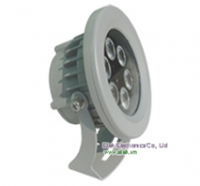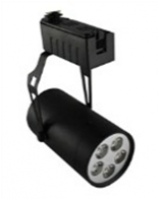Top News
Mr. Nguyen Quan Chinh, Vice Chairman, People's Committee of Quang Tri Province came to visit the site of LED installation.
5 restaurant redesigns to reduce energy costs
Instead of viewing high energy overhead as an inevitable part of the business, why not regard it as a challenge and an opportunity? It is possible to implement changes that can vastly improve a restaurant’s energy profile. The US Department of Energy issued a study of quick-service restaurants to determine how they can best reduce their energy costs. Here are some ideas based on that research that can help you take advantage of energy and cost savings through smart redesign of your kitchen space and equipment:
Upgrade your cooking appliances
The largest portion of energy (45 percent) used by a typical quick-service restaurant goes toward cooking food. If you are using older equipment, you may want to consider replacing it with newer, Energy Star-approved appliances. High-efficiency Energy Star commercial kitchen equipment such as convection ovens, griddles and fryers can save hundreds or even thousands of dollars annually per unit. You can save even more by installing timers and turning off warming equipment when not in use.

Improve your HVAC efficiency
Heating and cooling the building represents the next greatest restaurant energy need (31 percent). Again, replacing older, inefficient equipment may be the best solution. However, there are less expensive measures that can help as well. Insulating and air sealing the building can reduce your restaurant’s energy demands, as can installing a cool roof. It also pays to set your thermostats up or down at night (according to season) to reduce the need for heating and cooling when the building is not in use. Be sure to install proper ventilation to direct overheated air out of the kitchen in warm weather, too, and place coolers well away from ovens and other heat-generating equipment when possible.
Go for high-efficiency lighting
Seven percent of your restaurant energy bill is likely to go toward interior and exterior lighting. If you are still burning incandescent bulbs, it’s time to change them out. High-efficiency LED bulbs burn just a tenth of the energy, and pay for themselves easily over time. They last 20 times longer, too, so you can reduce the hassle of burned out light bulbs. Of course, even LEDs are not as efficient as harvesting free natural light from the sun. Adding skylights or high clerestory windows for daylighting is an effective way to illuminate your dining area with natural light while avoiding glare in diners’ eyes.

Watch your hot water usage
Six percent of the average quick-service restaurant’s energy bill goes to heating water for dishwashing and cleaning. One way to lower this bill is to use less hot water. You can do that by using energy-efficient dishwashers and fixtures in your kitchen. The other way is to pre-heat the water with waste heat from your kitchen or appliances, or by installing a solar hot water system.
Upgrade and maintain your coolers
The average restaurant spends 5 percent of its energy dollars on refrigeration. An Energy Star-qualified fridge or freezer will save an average of 30 percent in energy costs per year over an older, unqualified model. Even if you don’t replace your coolers, though, you can still upgrade for greater efficiency. Replacing the bulbs in your walk-in coolers will reduce the heat load inside, and adding strip curtains and automatic door closers can cut air leakage by 75 percent. You can also reduce the energy consumption of your cooler fans by two thirds by installing an electronically commutated motor. These are relatively inexpensive upgrades that pay back fast.
Running a restaurant can be pricey, and reducing overhead can make the essential difference between a profitable operation and one that fails. For all these energy upgrades, it’s important to think long term and consider the entire life cycle of the technology in question. For example, a high-efficiency steamer could save you more than $2,000 annually in combined energy, water and sewer costs, according to government estimates. That can go a long way toward justifying a higher upfront cost, wouldn’t you say?
qsrweb.com
Source: tietkiemnangluong.com.vn
Newer articles
- A new turning point for Ly Son (16/10/2014)
- Da Nang has replaced A92 petrol with biofuel since November (12/10/2014)
- Strengthening policies to promote energy efficiency in corporations (12/10/2014)
- 1,720 key energy-using establishments in Vietnam (07/10/2014)
- Small steps at home giant leap for energy saving (07/10/2014)
Older articles
- Implementing energy efficient projects in construction sector (24/09/2014)
- Lai Chau Hydropower Plant project to be completed (24/09/2014)
- Reducing loss in coal resource (19/09/2014)
- Country saved 1.78 billion kWh in August (19/09/2014)
- A good method to save electricity (15/09/2014)
Devices
Energy Audit
ONLINE
(0909.901.045)
| MOU SIGNING CEREMONY ABOUT SPECIAL LED WITH COB TECHNOLOGY FOR FISHING SHIPS BETWEEN QUANG TRI PPC AND NEDO |







































